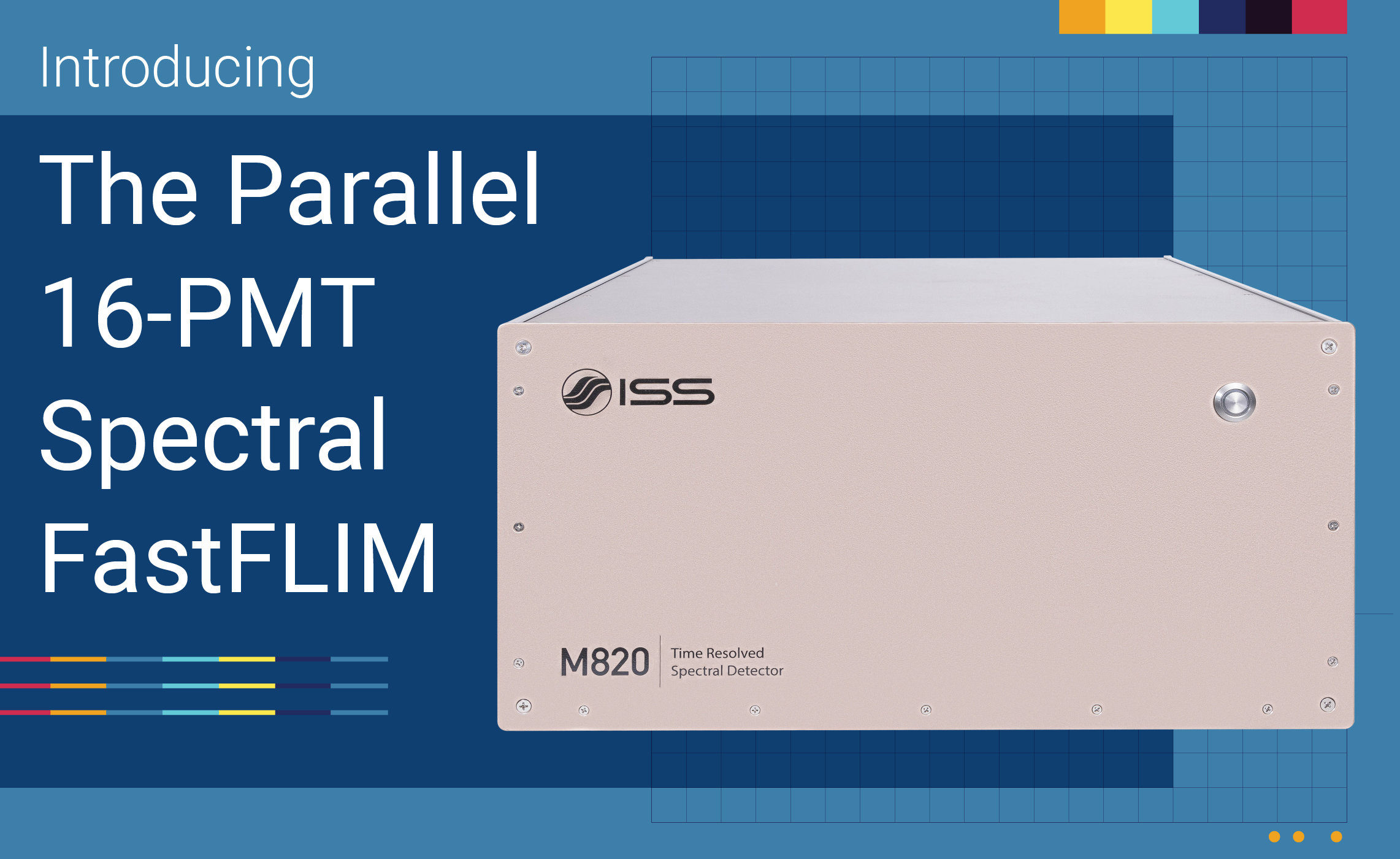新闻

Introducing the Parallel 16-PMT Spectral FastFLIM
Champaign, Illinois - January 17, 2024 - Multiplexed fluorescence detection has become an indispensable tool in modern biosensing and imaging. Although a variety of excitation/detection optics designs and unmixing schemes have been proposed to achieve multiplexed detection, successful differentiation and quantification of multiple fluorophores at each imaging pixel is still challenging. Recently, fluorescence lifetime imaging microscopy (FLIM) in combination with phasor plot analysis has shown many advantages over other multiplexed detection methods. Being an intrinsic property of a fluorescent molecule, fluorescence lifetime measured by FLIM is not biased by excitation power or probe abundance and can reveal information on the probe's microenvironment (ions, pH, oxygen content, electrical signals, index of refraction's, etc.). In addition, FLIM is one of the most robust ways of quantifying FRET for studying protein-protein interactions. Moreover, by combining lifetime information with a spectral reading at each pixel, spectral FLIM adds two more dimensions to the spatiotemporal information collected by a conventional confocal setup, resulting in a 6-dimensional (x, y, z, λ, τ, t) data set. The major challenges to the spectral FLIM methods lie in the data acquisition speed and the complexity in post processing and analysis. Here, we present a new time-resolved spectral detector with parallel 16-channel digital frequency domain FLIM (FastFLIM) readouts for fast spectral FLIM data acquisition. The 16-channel FastFLIM can produce unbiased spectral FLIM data for phasor analysis that unambiguously discriminate and quantitate fluorescent species with unique spectral and lifetime features at each image pixel. Our spectral FastFLIM method offers new opportunities for monitoring multiple dynamic signaling events in live specimens, providing insights into complex biological systems.



